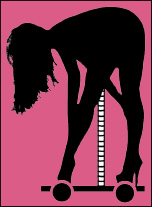[Crackpot answers will be in brackets.]
Got Into Boxing - Need Help
Inbox
Sat, Nov 4, 2023, 9:38 PM
to james@jameslafond.com
Hello James,
I signed up in a boxing gym and I need help with a few things. I am 36, 6'2 and 220 lbs. I am about 10 lbs overweight right now and on the muscular side of things. I'm not in great shape but it's getting there. I have no prior injuries.
[You'd be better off being fat than muscular. Don't worry too much about the weight. Relax, do mostly shadow boxing. You are ancient for starting boxing, so it will be a tough road.]
Most of the other athletes are teenagers and younger males aged 15 to 22. There are some teenage girls and young females amongst them but they don't count. The coach is a local champion and he seems like a good guy - has that "keep the kids off the street" kind of mentality. Good vibes all around.
[You're style should be counter punching, because these kids will mostly score first. Develop that into stop hitting and cut off punching. The two things that will get you hurt are trying to hit hard and being tight.]
I have been attending classes for about a month, twice a week. The rest of the time I keep myself busy with heavy club swinging and kettlebells. I have started to shadowbox but feel like I don't know what I'm doing. I also do solo agonistics training with knives and sticks. I use your books and videos as reference.
[Classes is not where boxers are made. It is the solo work and the sparring. Boxing classes are bullshit and for making money. All boxing training should be solo, one on one, or coach and 2 or 3 fighters rotating in the ring. Boxing classes have two origins: Asian martial arts and women's fitness. Get beat up sparring and learn to relax and observe. Your coach will not be near as good at helping you as the age group he typically works with. Become useful as a human punching bag and learn from the pocket. Work on your mechanical recall, and shadow box scenarios from your sparring experience.]
Here are my issues:
I have poor defense and footwork.
[Practice moving diagonally to the side where your rear foot is while jabbing, and jab high, as you fade. Do not step to those twerps. Make them come to you. If your coach keeps telling you do go forward, he is using you as a sparring partner, not developing you, using you as a decommissioned ship being towed out for gunnery practice. Never step back. Practice jabbing while moving to your open side and throwing your rear hand while moving to your closed side. Become a counter puncher by studying your poor defensive position and looking for the door, which will be a side door, not a back door. ]
Whenever pressed during sparring by a younger and nimbler partner (which is all of them), I tend to revert back to my fencing footwork and use drag steps. I tend to spar flat-footed. I eat an embarrassing number of punches before managing to escape the guy by shambling out and sideways. Most of the shots I eat are headshots; the body shots are stopped by my elbows and the blubber I have around me absorbs the rest. I tend to keep my hands too close to my face, too.
[Only young naturals become good at boxing by just boxing at the gym. If you are not Casius Clay, you need to do most of your work at home or at least alone. Do 30 minutes of shadow work per day.]
[You are slow, so you need to keep your hands near your face. Keep elbows high and let them at your body and drop your elbows on their thumbs, not too hard, because the coach cares about those kids and could care less about you. At home, on your own, practice side stepping in small steps and drag motions. Practice the U-hustle. Extend your ponderous palm above the twerp head so it can't ding your chin, then drop that paw on his head top or shoulder and use him as a post to slide off. Always try and get behind him. Practice side lunges to get out of trouble by keeping your rear foot at 90 degrees, pushing off with your flat lead heel, and posting. Then, once you have put your weight on him so he goes flat footed, hit him with a straight rear hand.]
Question : where do you look during sparring? I tend to look at the other guy's gloves.
[Always look at the chest. It tells you when his elbows leave the body, and unless he is a giraffe, you know where his face is without looking. this also gives you a peripheral view of his hips.]
Things get better in offense. I still move slow but manages to force tempo and measure on the other guy because of my reach and strenght. My jab is decent and I use it a lot to control the other guy. I don't have fast hands but they're pretty heavy and sink in nicely whenever they land. I go out of my way not to hurt the kids but sometimes I sneak in a nice left hook that knocks a bit a wind out them. I also frustrate them with a posted jab that knocks them off balance and forces them to reposition. I can only jab and throw a long, twisting left hook to the face and body. My uppercuts are trash so I never throw them and my cross is unreliable.
[Upper cuts are trash. Stick with that left hook while stepping to your right side. Always double jab. Make 1 in three jabs blind jabs. Being the bigger man, most of your jabs should be to his CHEST—the chest, watch Roy Jones verus Ruiz, They both do it well and Roy did it better. Don't let him hit your chest, hit his. You will get better at defense by doing it, by sparring at what you are NOT good at and letting them come to you. Eventually this will set you up to go on the offense. Sparring defensively is better for survival, as people are wont to sneak punch or back jump than challenge in our increasingly low trust anti-honor world.]
How can I get better at defense and moving around? Do I need to incorporate more punches or should I stick with jabs and basic footwork for now? Thanks.
[Jabs are the only punches that do not interfere with your foot work. After a month or two you should not have thrown any punch other than a jab. Part of your problem is the coach doesn't know how to train someone who is not naturally designed and optimally aged for boxing. This is what happens with most champs that turn coach, they are really weak on early and remedial development.]
[You have two good punches there from the left side. Try sliding your right hand forward to catch punches and keeping your left low and winding them as they come in. then jab as you move to your right. Your right hand should be reserved for hitting lefties down the middle and thumping righties after you have posted on them with your lead hand and stalled their motion. Practice over hooking a clinch, and then turning them against the robes. If you can put the left palm on his right shoulder, apply inward pressure and step left while you drop a short right down the middle. With little guys, use a thumb up sneaky right. You don't need to turn it over.]
[You should really just defend with your right hand and strike with your left. Instead of pivoting with the hook, step drag with it for power. A fighter should not be taught to hook for 6 months, uppercut for a year. The straight rear hand can be taught as soon as the jab is perfect. As the big older man I like your goal being to jab like Marvin Haggler did against John Mugabi, with a fencer's lunge, and since you are not Marvin, at the chest. that will sit the twerp down for your power shots.]
Mike
[Good luck, Mike.]
Sent with Proton Mail secure email.
James LaFond <jameslafond.com@gmail.com>
Wed, Jan 3, 9:37 PM (13 hours ago)
Mike,
thanks
sorry for taking so long
this will be a great article
keep your hands high.
let him have the bod.
look at his chest
drop elbows on his thumbs
never look at gloves
will answer and post soon
peace
james











